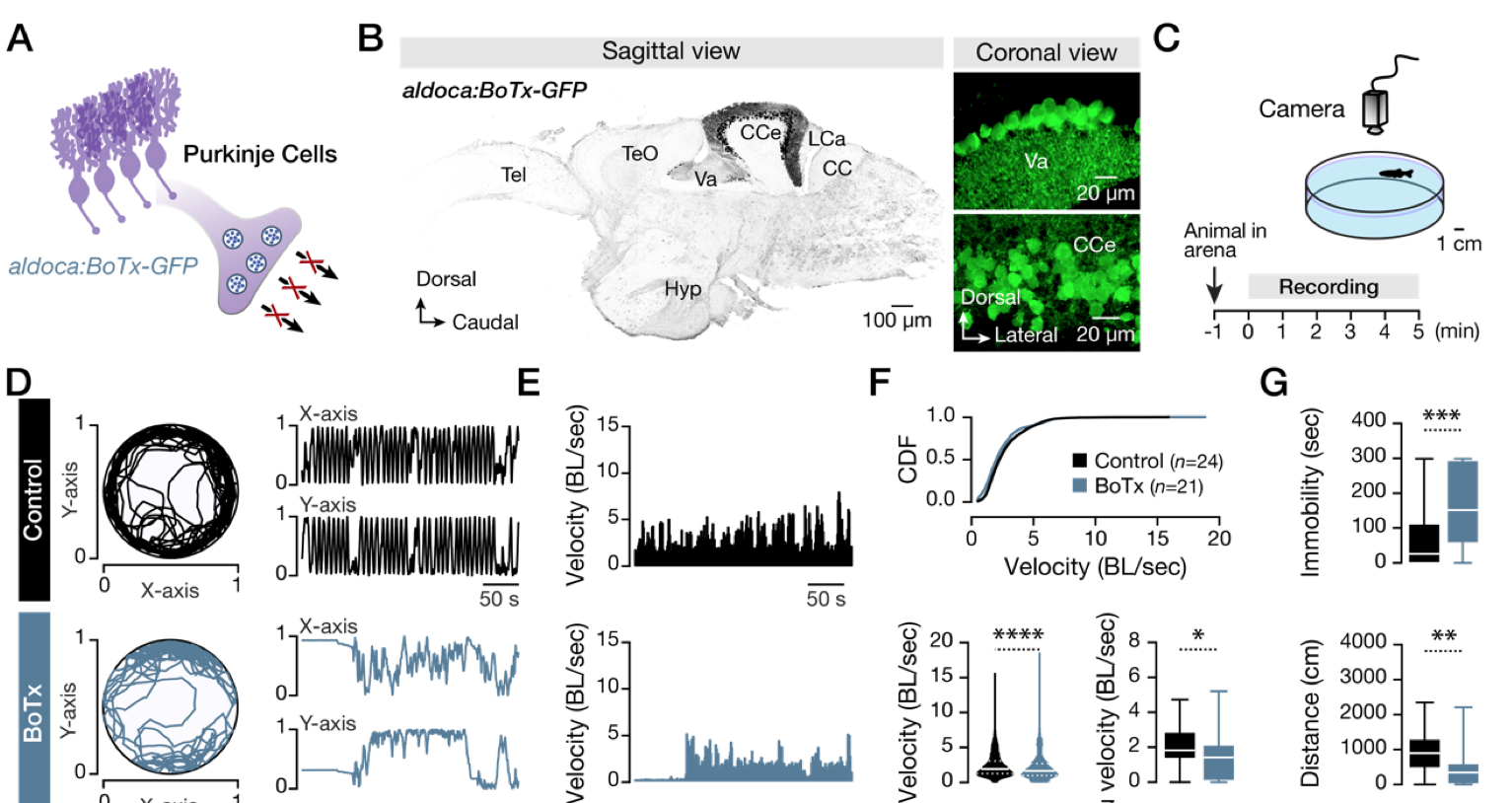Fig. S1
Adult zebrafish Purkinje cell silencing disrupts locomotor performance. (A) A transgenic animal line in which all and only the Purkinje cells encode Botulinum toxin (BoTx) was used. (B) Sagittal view of the adult zebrafish brain showing the specificity of the transgenic zebrafish line. Microphotographs acquired from the adult zebrafish valvula (Va) and corpus (CCe) cerebelli showing the expression of the BoTx (GFP+; green) in the Purkinje cell population. (C) Experimental setup for recording and evaluating the adult zebrafish locomotor behavior under an open field test. (D) Sample traces of recorded movements of control (WT; black) and BoTx (aldoca:BoTx-GFP; Cyan) zebrafish, followed by an analysis of the body displacement with respect to X and Y axis during the open field test (duration 5 min). The BoTx animals exhibited erratic locomotion compared to the smooth movements observed in the control animals. (E, F) Traces and analysis of normalized velocity show that silencing Purkinje cells in aldoca:BoTx-GFP (Cyan) causes slow locomotion (velocity: P<0.0001, unpaired t-test; average velocity: P=0.045, unpaired t- test) during the open field test. (G) Quantification of the swimming parameters showing that the immobility time (P=0.001, unpaired t-test), and the total distance traveled (P=0.007, unpaired t- test), were significantly different between the control (black) and the aldoca:BoTx-GFP (Cyan) animals. BoTx, Botulinum toxin; CC, crista cerebellaris; CCe, corpus cerebelli; CDF, cumulative distribution frequencies; Hyp, hypothalamus; LCa, lobus caudalis cerebelli; Tel, telencephalon; TeO, tectum opticum; Va, valvular cerebelli; μ, mean. Data are presented as box or violin plots showing the median with 25/75 percentile (box and line) and minimum–maximum (whiskers). *P<0.05; **P<0.01; ***P<0.001; ****P<0.0001; ns, not significant. For detailed statistics, see SI Appendix, Table S1.

